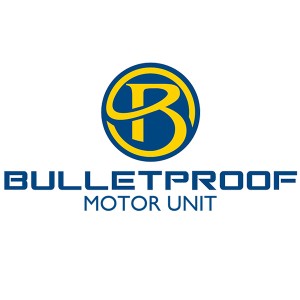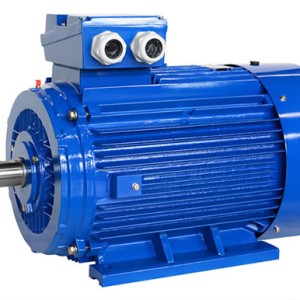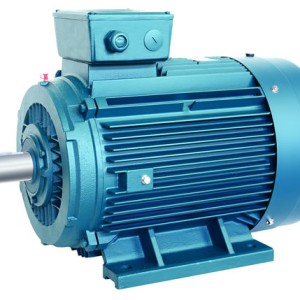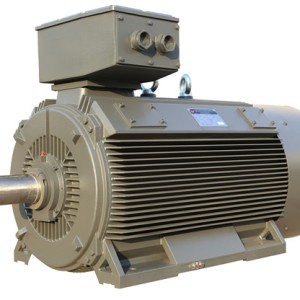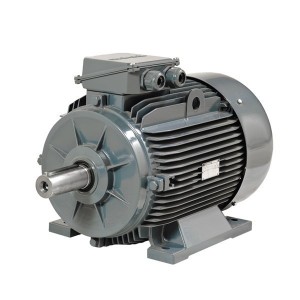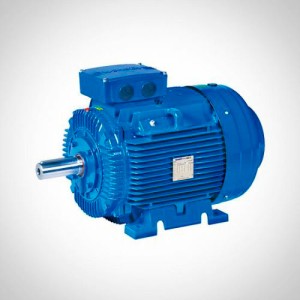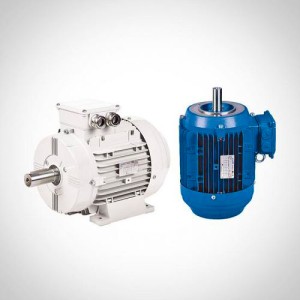To put it simply, the three-phase asynchronous motor is mainly composed of two parts: the stator and the rotor, and the air gap between the stator and the rotor is generally 0.25~2mm, because the air gap is also a part of the magnetic circuit of the motor. When the air gap is large, the reluctance If it is large, the excitation current is also large, so the air gap should not be too large. On the other hand, the air gap should not be too small.
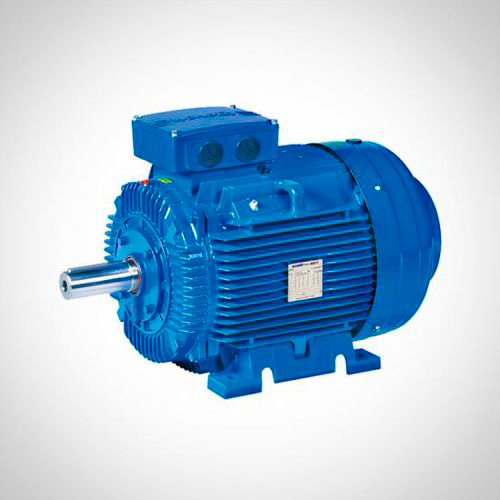
First, the stator part
Stator: The stationary part of the motor that does not move is called the stator. It mainly includes components such as stator core, stator winding and frame.
1. Stator core: It is a part of the magnetic circuit of the motor. In order to reduce the loss in the stator core, the core material is generally made of punched silicon steel sheets with a thickness of 0.35~0.5mm and an insulating layer on the surface. There are evenly distributed slots in the inner circle of the iron core punch, and the slots are used to embed the stator windings. There are three types of grooves: open type, semi-open type and semi-closed type.
The semi-closed slot is generally used for small motors. The advantage is that the efficiency and power factor of the motor are high. The disadvantage is that it is difficult to wire and insulate the winding. The grooves can be embedded with insulated windings, which are mainly used for high-voltage motors.
2. Stator winding: It is the circuit part of the motor. Its function is to pass three-phase symmetrical alternating current to generate a rotating magnetic field. It is composed of three-phase symmetrical windings. We use u1, v1, and w1 to represent the head ends of the three windings, respectively. U2, v2 , w2 represent the ends of the three windings respectively, so the stator core of the motor generally has six outlet ends u1, v1, w1, u2, v2, w2 after the wire is embedded and the wire is out. When assembling the motor, we need to Lead the six outgoing ends of the three windings to the junction box of the motor, and we can connect them into a star or a triangle according to the needs. Generally, they are connected to a star under 3KW, and other powers are connected to a triangle.
The stator winding is the most important part in the motor. In order to ensure the normal operation of the winding, the insulation between the windings must be reliable. The general insulation mainly includes:
Slot insulation: prevent the winding from short-circuiting the core (ground) – use insulating paper;
Insulation between turns: to prevent short circuit between turns of the winding – use the insulating layer of the magnet wire itself;
Interlayer insulation: For double-layer windings, the insulating material is the same as slot insulation;
Phase-to-phase insulation at the ends: Pad the phases with triangular insulating paper, and wrap the nose with cloth tape.
3. Frame: It is used to fix the stator core and support the rotor with two end covers, at the same time protect the electromagnetic part of the whole motor and dissipate the heat generated during the operation of the motor, so there are heat sinks outside the frame of the enclosed motor to increase heat dissipation Area, in order to facilitate the transportation of the motor, the motor base is also equipped with a lifting ring.
Its materials are mainly cast iron (small and medium-sized motors), steel plates (CZ, CBZ, large high-voltage motors), and aluminum (1AL series).
Second, the rotor part
Rotor: The rotating part of the motor is called the rotor, which is mainly composed of the rotor core, the rotor winding and the rotating shaft.
1. Rotor core: It is also a part of the magnetic circuit of the motor. Generally, it is punched and laminated with mutually insulated silicon steel sheets with a thickness of 0.5mm. The outer circle of the punched sheet is punched with evenly distributed slots for placing the rotor windings.
2. Rotor winding: the action generates induced electromotive force and current, and generates electromagnetic torque under the action of the rotating magnetic field to make the rotor rotate. Rotor windings can be divided into two types: cage type and wound type.
(1) Squirrel-cage rotor: The squirrel-cage rotor has single-cage, double-cage and deep-groove structures. The single cage type can be divided into two types according to the different materials. One is to cast the rotor conductor, the short-circuit ring at both ends and the fan blades with aluminum liquid at one time (cast aluminum rotor); the other is to cast aluminum in each rotor core. Insert a copper bar into a slot, and weld each copper bar with a copper exchange at both ends of the iron core (for high-voltage motors)
(2) Wound rotor: refers to the three-phase symmetrical winding with the same number of poles as the stator winding embedded in the rotor wire slot, which is generally connected in a star shape, that is, the ends are connected together, and the head end passes through slip rings and brushes. The device is connected to an external circuit. (YZR)
3. Rotating shaft: It is used to support the rotor core and winding, and transmit the mechanical torque output by the motor, and at the same time ensure a certain uniform air gap between the stator and the rotor.
Third, other accessories
1. End cover: installed on both sides of the machine base, the bearing is placed in the bearing chamber to support the rotor and maintain the concentricity between the stator and the rotor.
2. Bearing and bearing cover: The bearing supports the rotation of the shaft, and the bearing cover is added to the Y160 and above.
3. Fan and fan cover: the rotating shaft drives the fan to rotate together, which plays the role of cooling the motor, and the fan cover protects the fan.
4. Outlet box cover and outlet box seat: Installed on the base to protect the outlet part.
5. Nameplate: Mark the main technical data, model, factory number, rated power, voltage, current, frequency, speed, protection level, noise level, working system, insulation level, connection method, weight and date, etc.
Post time: 2022-02-22


